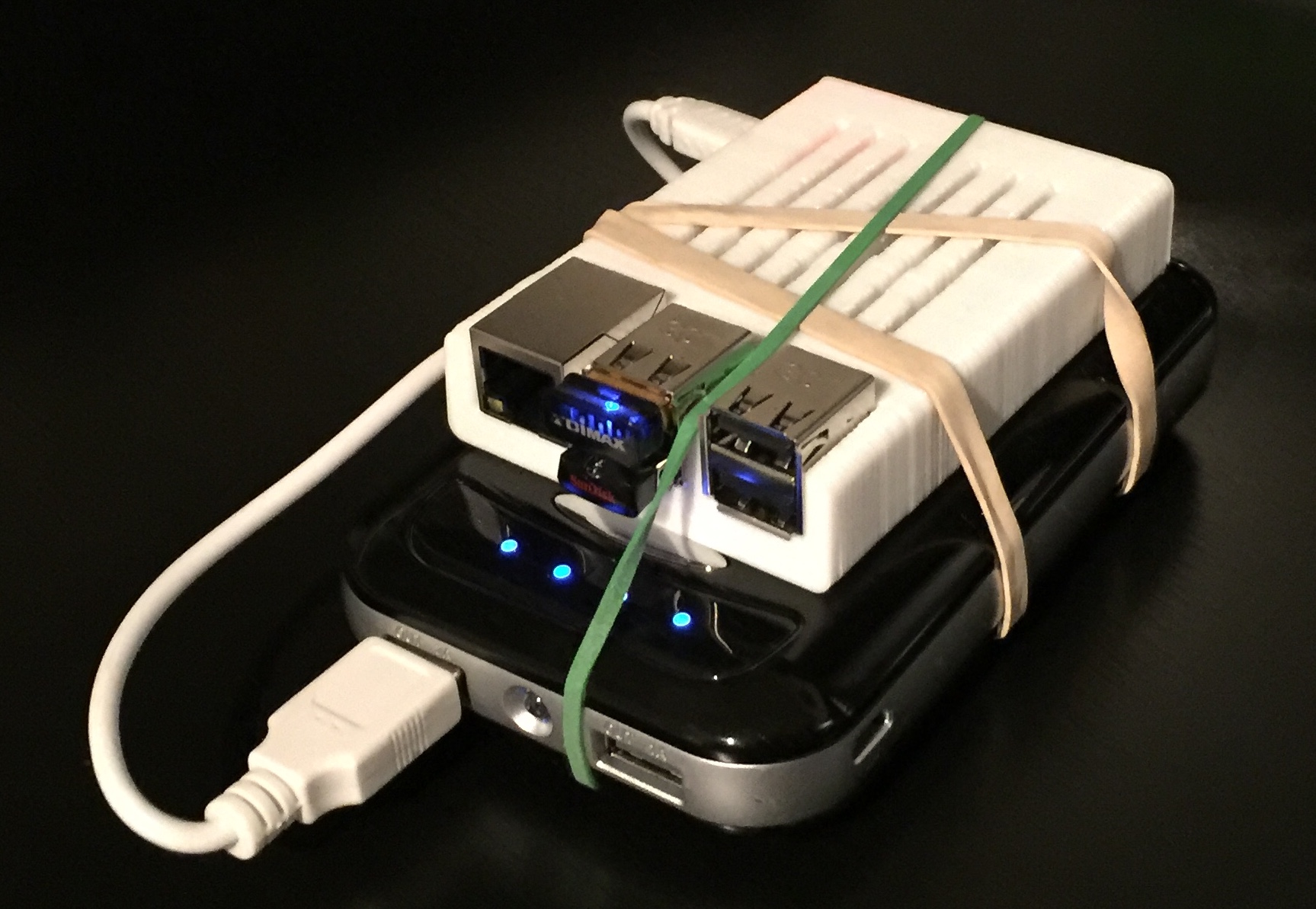Portable Raspberry Pi Dev Box

Portable Pi
For sometime, I’ve been interested in the idea of doing ‘real’ work from mobile devices. As a software developer and self proclaimed command line junkie, having access to a real terminal on the go is essential to my work. There are terminal emulators available for both iOS and Android but they aren’t exactly productivity tools as they lack package managers etc.
This for me is where a Raspberry Pi comes in, a small, compact device that can be run off a reasonably sized battery pack for a good few hours (I’ve got around 5-6 hours from a small 5200Mah battery). I can just throw it in my bag and forget about it until I need it. I should probably mention at this point that if you’re always going to have internet access it’s probably going to be better for you to just pay for some small VPS and be done with it. However, I can’t be the only one who has set up for work in a coffee shop and then found that the access point is down. Plus I can’t tell you how handy this will be on my next flight (still waiting to try).
The biggest hurdle to overcome is being able to SSH into the Pi without an internet connection. For this I set up the onboard wifi card (I’m using a RPi 3) to serve as an access point using hostapd & dnsmasq.
So the actual traffic flow will look something like the diagram below. Any of my devices will connect to the wireless network being served by hostapd on the Pi and assigned an IP address in the 10.0.0.X subnet. Then any actual internet connection (via Ethernet or the USB Wifi card) is NATed onto the onboard wifi card so that any connected devices still get external access.
+-----------+
| |
| My Device | 10.0.0.X +------------+
| | | |
+------+----+ +---+ Internet +---+
| | | | |
| | +------------+ |
| | |
| | |
| +--------|--------------------|----------+
| | | | |
+-----+---+ | +-----+----+ +-------+-------+ |
| | | | | | | |
| Onboard | NAT | | Ethernet | | USB Wifi Card | |
| Wifi +-----------+ | | | | |
| | | +----------+ +---------------+ |
+---------+ | |
10.0.0.1 +----------------------------------------+
Here the Raspberry Pi acts like a portable router allowing me to connect to it as an access point and SSH into the Pi. If I then have access to the internet via wifi or ethernet I can configure that on the Pi through SSH.
In order to make this setup a little more robust it is a good idea to add a USB memory stick to house the /home partition. I’ve been using Raspberry Pi’s since the first one was released in 2012 and have never been plagued by corrupt SD cards but I know many people who have. Almost all my Pi projects up to this point have been run off mains power with very infrequent restarts so I’m sure that’s a contributing factor. However, this being a battery powered project I’m much more likely to run into power outages and I want that precious data in my home directory to stay intact! So I loaded up all my software and there you have it. I’ve got a portable dev computer I can just throw in my bag.
I’ve already got some ideas around adding RF & IR sender/receivers to this Pi for being able to do some simple home automation on the go and hacking around while travelling. So look out for a follow up.